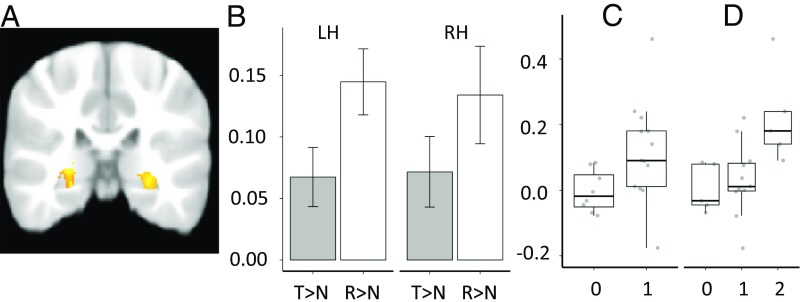Fig. 2.
Group analyses were constrained to the left (LH) and right hippocampus (RH) using age-appropriate hippocampal templates and a cluster thresholding process (z = 2.30, cluster corrected, P < 0.025). (A) These analyses isolated active bilateral clusters for the memory (target + reversed) > novel contrast (left, max: x = −26, y = −33, z = 1; 1,839 voxels; right, max: x = 23, y = −27, z = 1; 1,107 voxels). (B) Mean parameter estimates (PEs) (y axis) were extracted from these active clusters separately for target > novel (T > N) and reversed > novel (R > N) contrasts (x axis). Activation for R > N was significantly stronger than T > N [F(1,21) = 6.88, P = 0.016, η2p = 0.25] [LH, t(21) = 3.21, P = 0.004; RH, t(21) = 1.81, P = 0.085]. (C and D) The relation between PE (y axis) for T > N in the RH and the number of correct items in our two behavioral measures (x axis), room choice (C) [r = 0.43, t(19) = 2.10, P = 0.049, d = 0.77] and the composite memory measure (D) (ρ = 0.60, P = 0.004) was significant.

